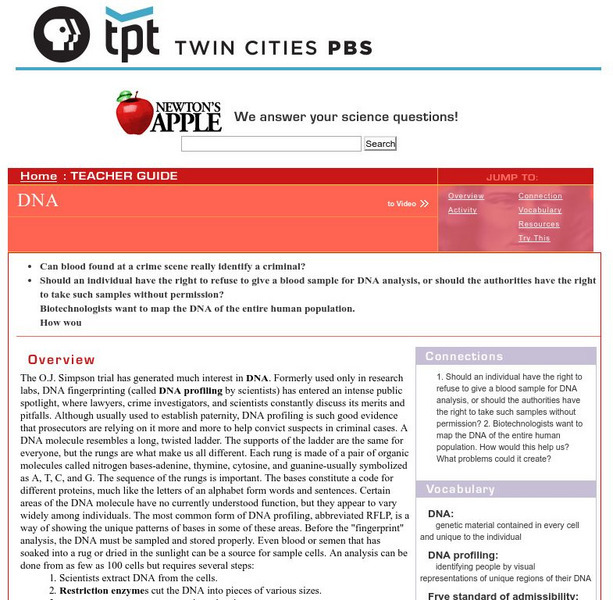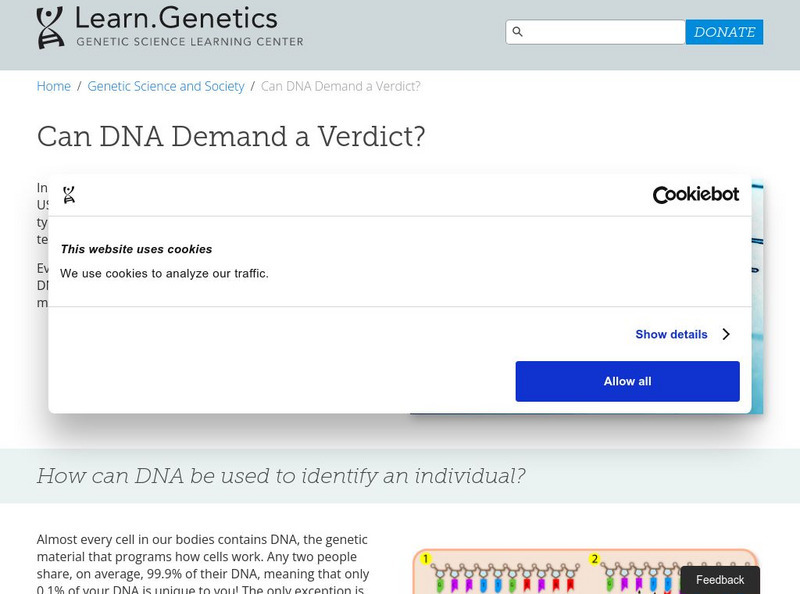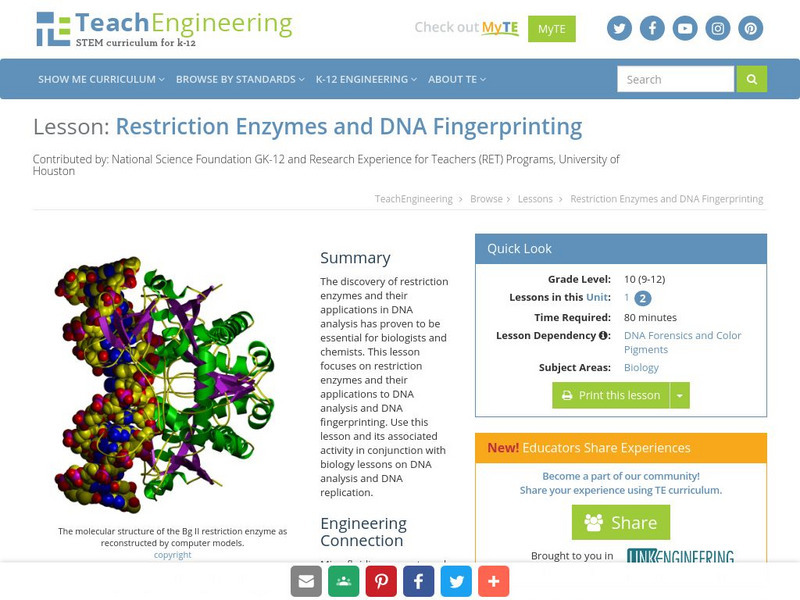Curated OER
Museum Practice for Students
Before any of us can learn to enjoy a trip to an art museum, we need to learn how to behave. This list of activities describe the behavior expected on a trip to an art museum. Each behavior comes with an activity intended to demonstrate...
Curated OER
Gandhi Speech Writing
Explore non-violent protest in this social values and world history lesson. After viewing the movie Gandhi, and discussing important events in Gandhi's life, young orators write a speech defending Gandhi's position on the value of...
Curated OER
Cyber Bullying
Cyber bullying is an important topic to address with middleschoolers. Here, learners take an active role in identifying and discussing this issue. Reviewing this resource with your class will help to equip them to be a part of the...
Curated OER
Who Is It?/Who Done It?
Students conduct an experiment that allows them to assess individual differences in random DNA sequences and apply those differences when solving a forensic problem. After discussing the polymerase chain reaction and its use to identify...
PBS
Written in Stone
Students explore history through a tour of a local cemetery. Students investigate tombstones for historical information, make stone rubbings, and use this secondary source reference to obtain primary sources.
Curated OER
Current Topics in Biotechnology
Eleventh graders are introduced to the concept of biotechnology. Using the internet, they research the latest developments in this field and the tools used by biotechnologists. They share their information with the class and create a...
Curated OER
DNA Activities
Students work together to identify the structure of DNA. They practice using new vocabulary as well. They create a 3-D model of DNA to complete the lesson.
Curated OER
Dig Magazine Archeology Quiz #106
In this Dig Magazine archeology quiz, students answer 12 multiple choice questions complementing the October 2009 issue. Page contains answer and additional resources link.
Curated OER
What Does That DNA Molecule Really Look Like???
Young scholars extract DNA from animal liver cells. They separate, collect and describe the appearance from the extracted DNA while role playing as an intern in a city's forensics.
Georgia Department of Education
Ga Virtual Learning: Forensic Science: Fingerprint Analysis
Why are fingerprints unique to each individual? This comprehensive interactive tutorial explains how fingerprints are classified and stored in AFIS (Automated Fingerprint Identification System). Also explore how fingerprints are...
PBS
Newton's Apple: Dna Fingerprinting
Great investigation topic revolving around DNA fingerprinting. Worth a look, educates and involves!
Science Buddies
Science Buddies: Who Done It? Dna Fingerprinting and Forensics
DNA fingerprinting (also known as DNA profile analysis and DNA typing), is a method of distinguishing between individuals by analyzing patterns in their DNA. This project focuses on the first method of DNA fingerprinting to be developed,...
Australian Broadcasting Corporation
Australian Broadcasting Corporation: News in Science: Fingerprints of Twins
If you had an identical twin would you have the same set of fingerprints? Site uncovers the answer by researching the science behind fingerprints.
Cyberbee
Cyberbee: Who Dunnit?
If you are a crime scene investigation (CSI) fan, then you will love this site! You get to be the detective by examining the evidence, viewing the crime scene, dusting for fingerprints, interviewing the suspects, and solving the crime.
University of Utah
University of Utah: Genetic Science Learning Center: Dna and Verdicts
Part of a site on genetics, this page explores DNA as a forensic science. Explains how and why DNA can be used to convict or acquit a criminal from wrongdoing using forensic DNA analysis. Teacher resources too.
TeachEngineering
Teach Engineering: Restriction Enzymes and Dna Fingerprinting
The discovery of restriction enzymes and their applications in DNA analysis has proven to be essential for biologists and chemists. This lesson focuses on restriction enzymes and their applications to DNA analysis and DNA fingerprinting....
New York Times
New York Times: Biometrics to Track Who Crosses Borders
Discusses the challenges the U.S. government faces in using biometric data, such as scanned fingerprints and facial features, to track foreign visitors in an effort to control illegal immigration and terrorist activity. Click on link for...
Corrosion Source
Corrosion Source: Osmium
This resource presents basic data, along with good information on the history, sources, properties and uses of osmium.
PBS
Pbs Learning Media: Forensics and Dna Profiling
Find out how DNA profilers analyze bits of tissue to identify human remains. From the NOVA: "Lost on Everest" Web site.
PBS
Pbs Learning Media: How Dna Evidence Works
In this article by An Meeker-O'Connell, discover how DNA evidence is processed before it goes to court.
The Association of the British Pharmaceutical Industry
Abpi: Biotechnology
Students read through a complete, interactive lesson on biotechnology. An activity at the end allows students to research and present arguments for or against statements about the ethics of gene therapy and gene manipulation.
Oak Ridge National Laboratory
Oak Ridge National Laboratory: Dna Forensics
A concise explanation of the use of DNA technologies in forensic identification from the Oak Ridge National Laboratory. Additional valuable resources are provided.
Curated OER
Ny Times: Biometrics to Track Who Crosses Borders
Discusses the challenges the U.S. government faces in using biometric data, such as scanned fingerprints and facial features, to track foreign visitors in an effort to control illegal immigration and terrorist activity. Click on link for...
Curated OER
Ny Times: Biometrics to Track Who Crosses Borders
Discusses the challenges the U.S. government faces in using biometric data, such as scanned fingerprints and facial features, to track foreign visitors in an effort to control illegal immigration and terrorist activity. Click on link for...

















